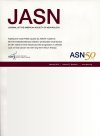Long-Term Kidney Outcomes after Pediatric Acute Kidney Injury
Among 4173 children with AKI, 18% had major adverse kidney events (death, kidney failure, or CKD) during a median 10-year follow-up.AKI survivors were at 2–4 times higher risk of major adverse kidney events, hypertension, and subsequent AKI versus matched hospitalized comparators.This justifies improved surveillance after pediatric AKI to detect CKD and hypertension early and improve long-term kidney health.
Background
AKI is common in hospitalized children. Pediatric AKI receiving acute KRT is associated with long-term CKD, hypertension, and death. We aim to determine the outcomes after AKI in children who did not receive acute KRT because these remain uncertain.
Methods
Retrospective cohort study of all hospitalized children (0–18 years) surviving AKI without acute KRT between 1996 and 2020 in Ontario, Canada, identified by validated diagnostic codes in provincial administrative health databases. Children with prior KRT, CKD, or AKI were excluded. Cases were matched with up to four hospitalized comparators without AKI by age, neonatal status, sex, intensive care unit admission, cardiac surgery, malignancy, hypertension, hospitalization era, and a propensity score for AKI. Patients were followed until death, provincial emigration, or censoring in March 2021. The primary outcome was long-term major adverse kidney events (a composite of all-cause mortality, long-term KRT, or incident CKD).
Results
We matched 4173 pediatric AKI survivors with 16,337 hospitalized comparators. Baseline covariates were well-balanced following propensity score matching. During a median 9.7-year follow-up, 18% of AKI survivors developed long-term major adverse kidney event versus 5% of hospitalized comparators (hazard ratio [HR], 4.0; 95% confidence interval [CI], 3.6 to 4.4). AKI survivors had higher rates of long-term KRT (2% versus
Conclusions
Children surviving AKI without acute KRT were at higher long-term risk of CKD, long-term KRT, hypertension, and subsequent AKI versus hospitalized comparators.




